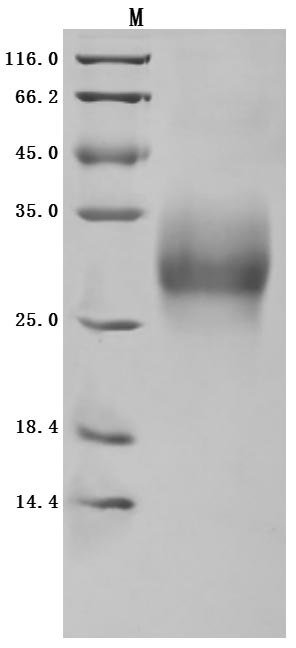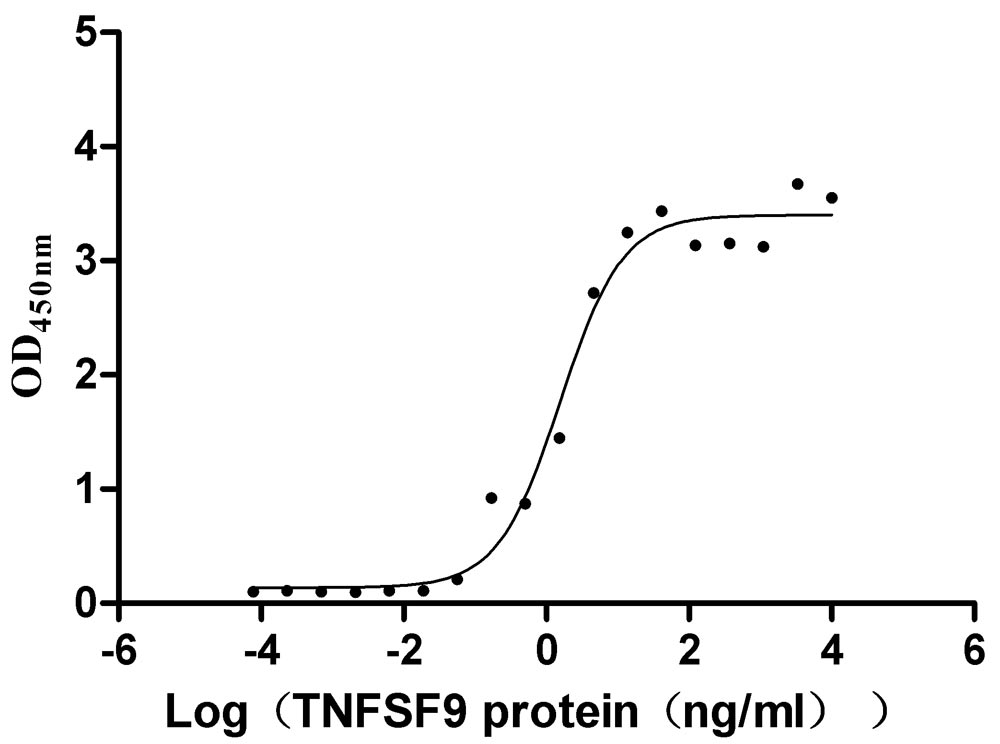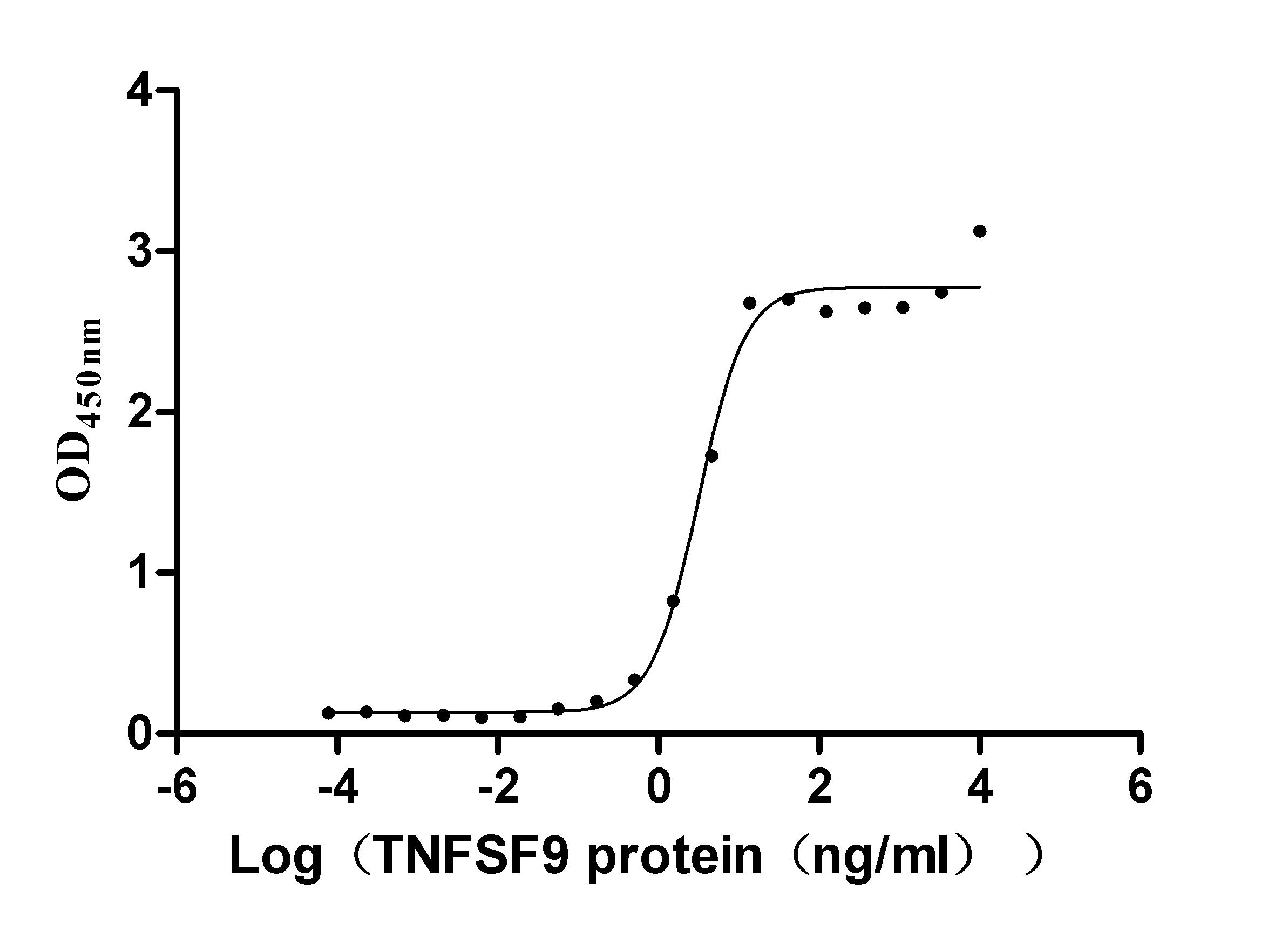Human TNFRSF9, amino acid Leu24-Gln186, with an N-terminal linker and a C-terminal 10xHis-tag, was expressed in the mammalian cells. The product is the recombinant human TNFRSF9 protein. It is biologically active, high in purity (>95%), and low in endotoxin content (<1EU/µg). In the functional ELISA, this TNFRSF9 protein can bind to the TNFSF9 with the EC50 of 1.011-2.429 ng/mL. It has an apparent molecular weight of approximately 28 kDa on the gel. This TNFRSF0 protein may find use in cancer research.
TNFRSF9, also called 4-1BB or CD137, is an inducible co-stimulatory receptor mainly expressed on activated T cells. TNFRSF9/TNFSF9 signaling plays an important role in the activation, proliferation, differentiation, and apoptosis of T cells, as well as the pathogenesis of some autoimmune diseases. TNFRSF9/TNFSF9 signaling also mediates anti-tumor immune responses of immune cells such as T cells and NK cells. TNFRSF9 is widely used in second-generation CAR-T cell therapy, and TNFRSF9-related bispecific antibody has been developed for clinical research in cancer treatment.









